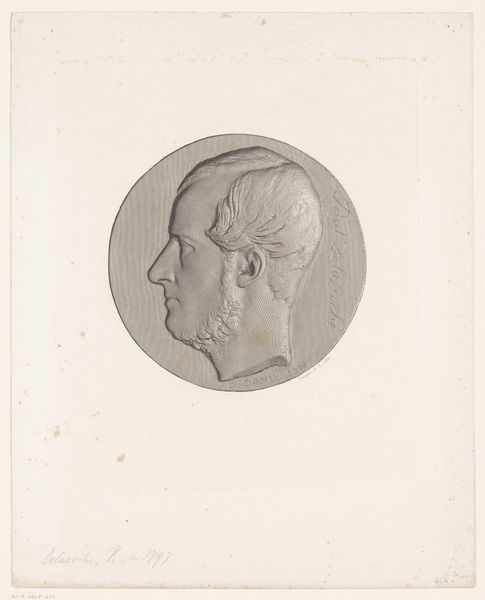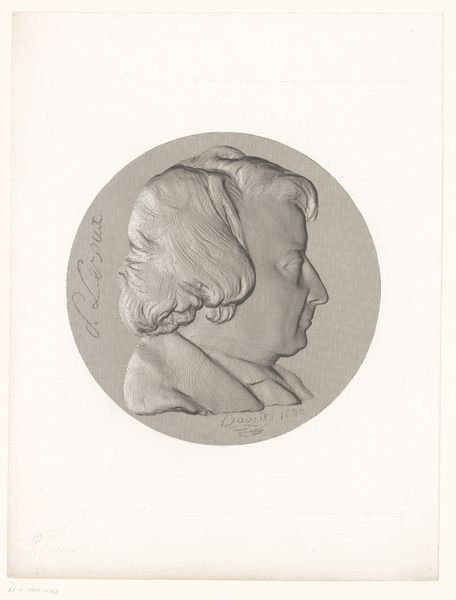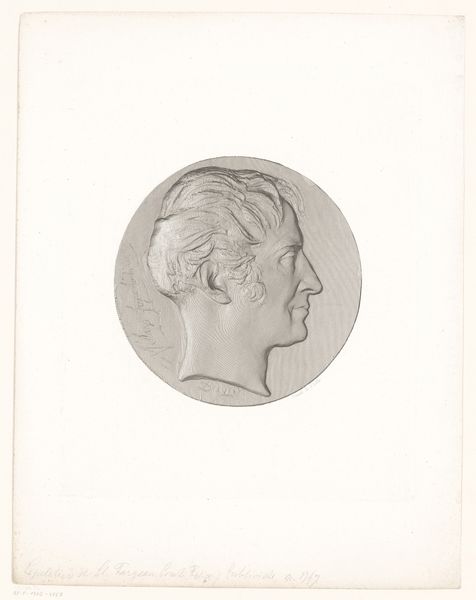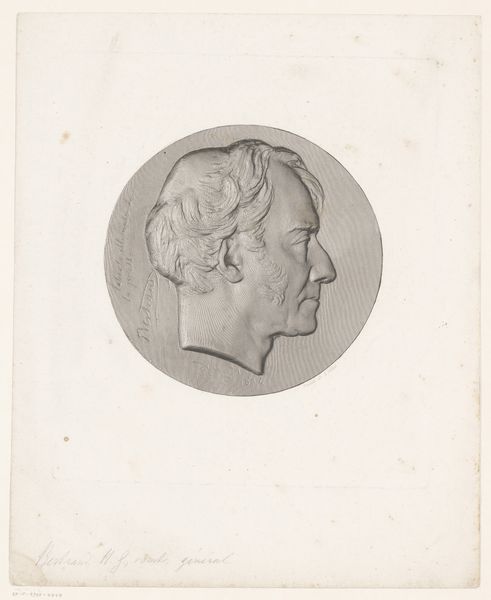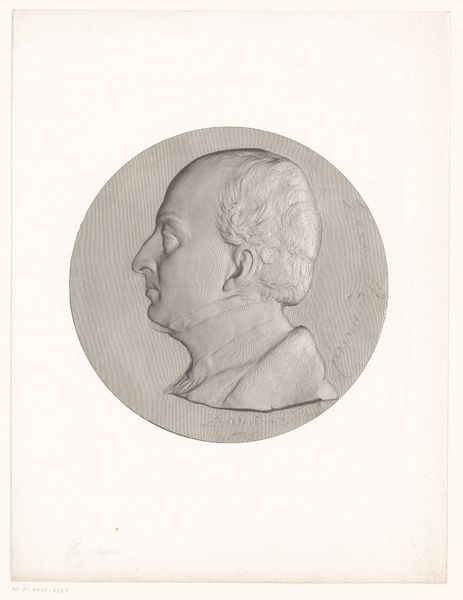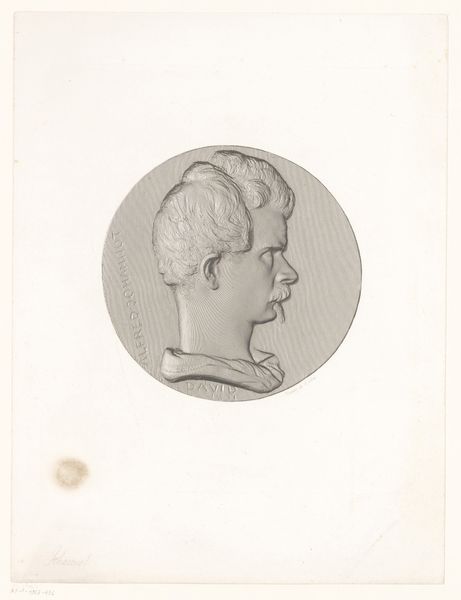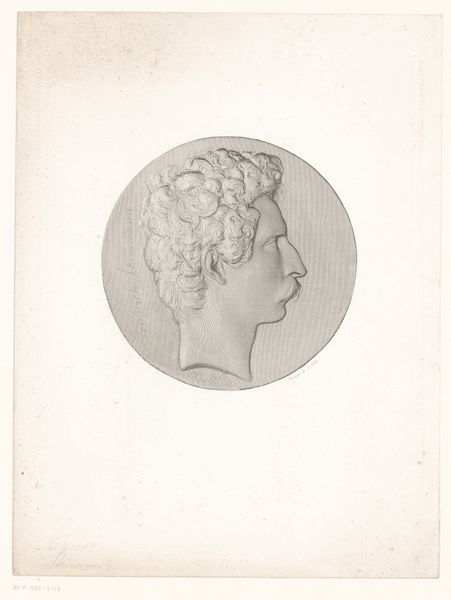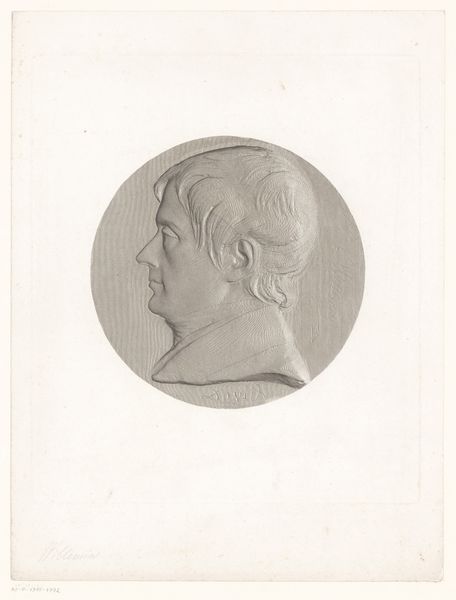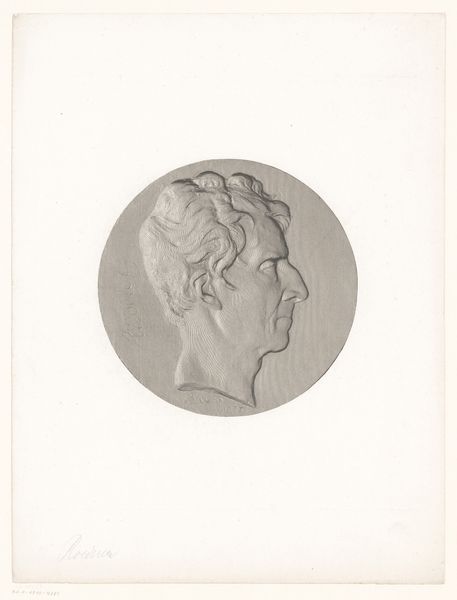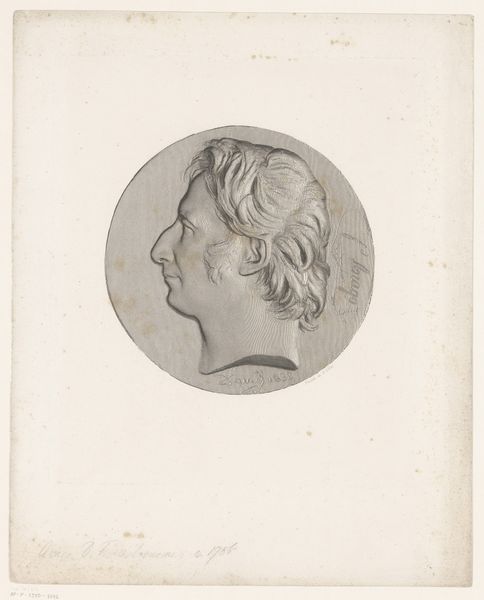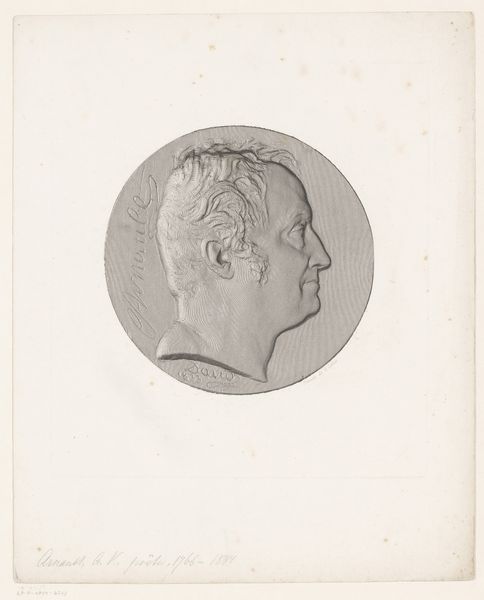
print, engraving
#
portrait
#
neoclacissism
# print
#
old engraving style
#
engraving
Dimensions: height 243 mm, width 208 mm
Copyright: Rijks Museum: Open Domain
Editor: This engraving, "Medaille met portret van Charles Philibert de Lasteyrie" created after 1833 by Achille Collas, it's quite striking. The precision of the lines and the monochromatic palette give it a sense of formality, a material presence... How should we approach reading this piece? Curator: Given its medium, an engraving mimicking a medal, let's consider the processes of its creation and consumption. What socio-economic forces were at play that made this printed "medal" a desirable object? Editor: So, thinking about the printing process... was it about wider accessibility? Could it reach an audience that a cast medal couldn't? Curator: Exactly. Engraving allowed for reproducibility. Think about the labor involved, too: the skilled artisan meticulously transferring the design onto a plate, which can then be mass-produced. This disrupts the singular aura often associated with sculptural portraiture. Who was the intended audience, and what kind of status did the image of Lasteyrie confer upon them? Was it aimed at other intellectuals, possibly with republican leanings? Editor: So it’s not just about immortalizing Lasteyrie but also about the *dissemination* of his image and ideas… through a repeatable object available to a potentially broad audience? Curator: Precisely. And what does it mean to create a "medal" in this way? A medal normally commemorates significant figures, but making it an easily reproduced print flattens, maybe democratizes that tradition. It opens up the concept of portraiture for a wider access. Editor: That's fascinating. I never thought about the printmaking process itself having such a democratizing influence, by re-imagining forms. It’s much more than just a portrait; it’s a statement. Curator: Yes, examining the material conditions of its production helps reveal its social function and cultural value. Editor: I see it now, thanks! It’s not just an image of a man, but a product of its time and the social currents at play, encoded within the choices of material production.
Comments
No comments
Be the first to comment and join the conversation on the ultimate creative platform.

